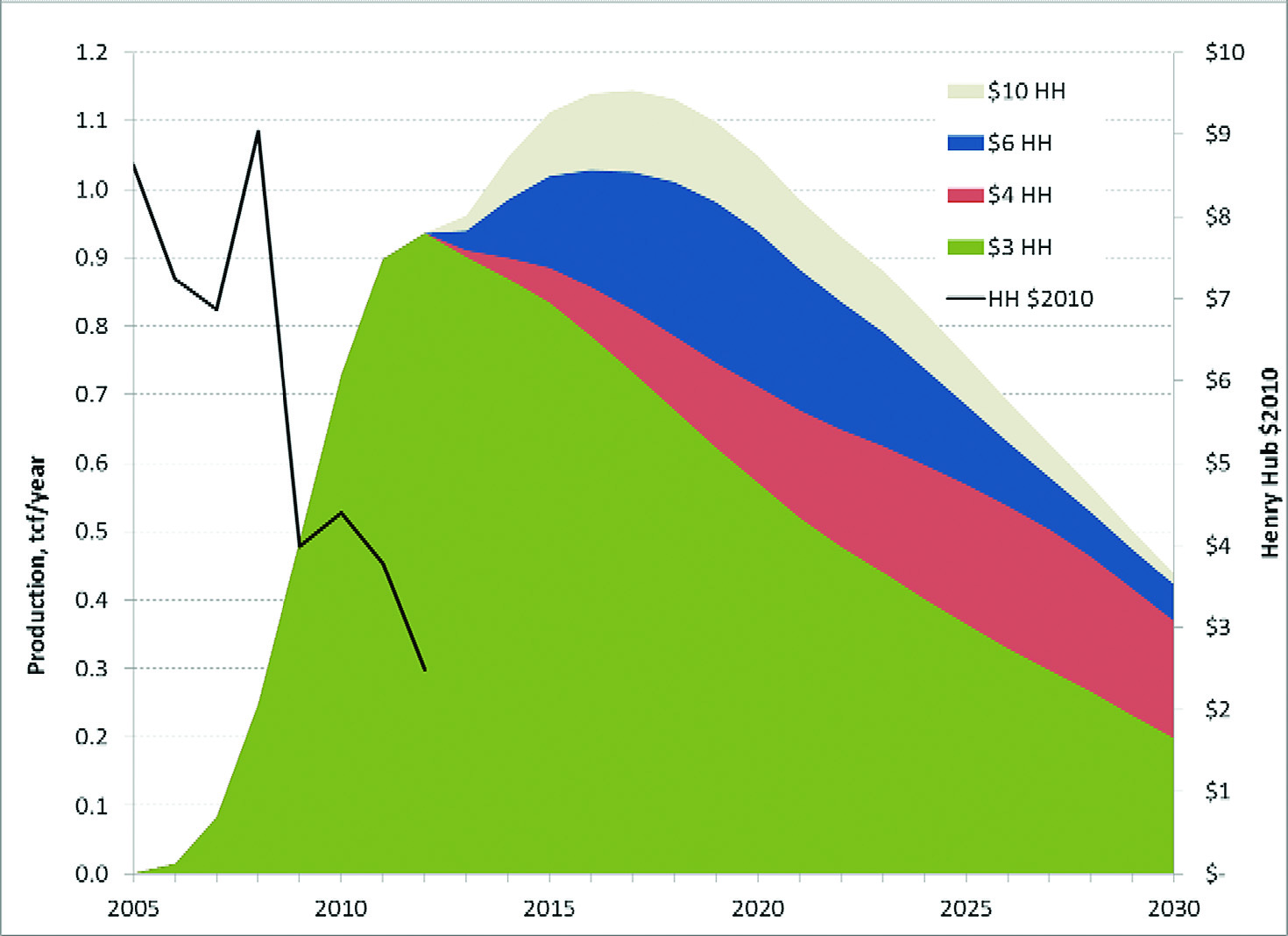Bountiful Supply
October 22, 2014
The Fayetteville Shale, one of the nation’s most productive shale gas basins, will continue to be a major contributor to U.S. natural gas supplies for years to come, according to a forecast from the Bureau of Economic Geology (BEG) released in January 2014.
The BEG found recoverable reserves of 18 trillion cubic feet (tcf) through 2050. A summary of the report was released in the Oil & Gas Journal.
The assessment of the Fayetteville Shale was part of a four-basin study of shale gas reserves funded by the Alfred P. Sloan Foundation. It followed the same methodology as the BEG’s 2013 assessment of natural gas production in the Barnett Shale, the nation’s most commercially developed unconventional gas play. Both studies integrated engineering, geology and economics and were designed to be among the most rigorous assessments to date of production in U.S. shale gas basins.
Drawing on production data from all of the individual wells drilled in the Fayetteville Shale from 2005 to 2011, the assessment estimates technically recoverable gas reserves for the region at 38 tcf, of which 18 tcf will be economically feasible to recover at natural gas prices near $4 per million cubic feet. (For perspective, the United States consumed about 25 tcf of natural gas in 2012, according to the U.S. Energy Information Administration.)

The BEG is moving forward with assessments of two other major U.S. shale gas basins, the Haynesville (in Arkansas, Louisiana and Texas) and Marcellus (in the Appalachian region), followed by a study of U.S. shale oil reserves, all funded by the Sloan Foundation, which makes grants to support original research and broad-based education related to science, technology and economic performance.
Most other assessments of shale gas reserves have taken a top down view of production, relying on aggregate views of average production. In contrast, this study takes a bottom up approach, starting with the production history of every well and then determining what areas remain to be drilled, said Scott Tinker, the BEG’s director and co-principal investigator of the assessment. The result yields a more accurate and comprehensive view of the basin.
For more information on the BEG assessments of the Fayetteville and Barnett shales and upcoming studies on the Haynesville and Marcellus shales, please visit the BEG-Sloan Foundation Shale Gas Assessment Study website at www.beg.utexas.edu/info/shale_rsrvs_prod.php. The website includes free links to the summary reports in the Oil & Gas Journal.
Back to the Newsletter